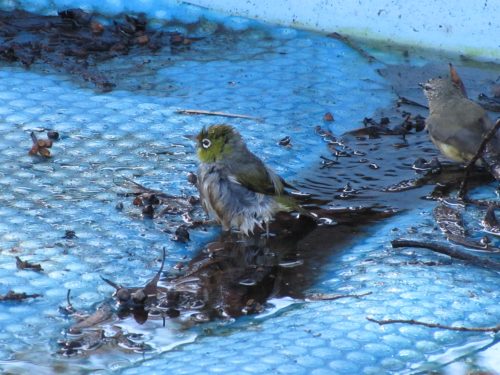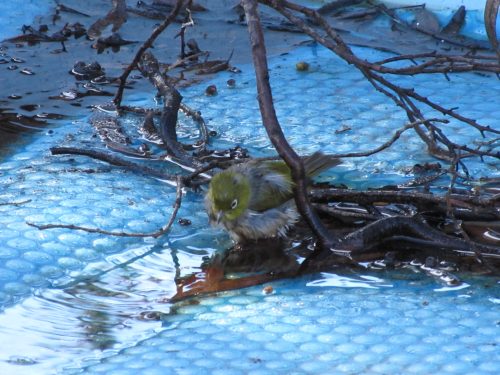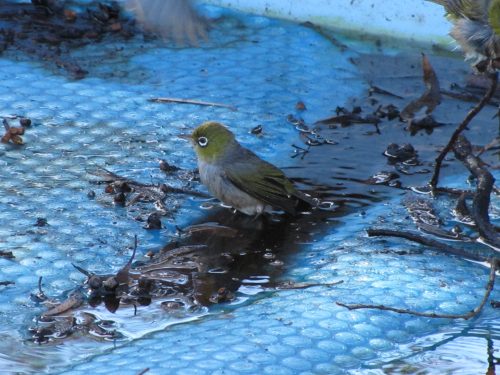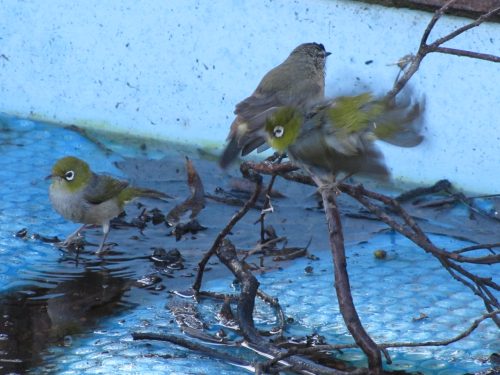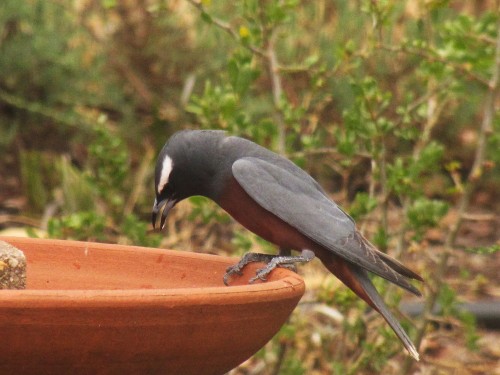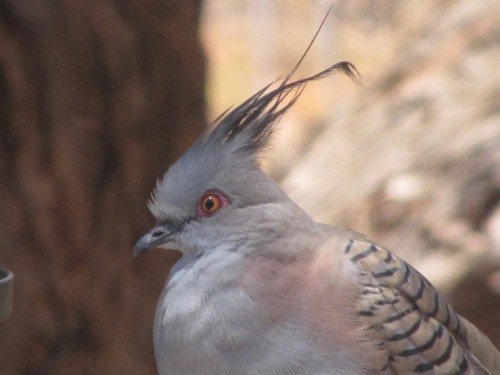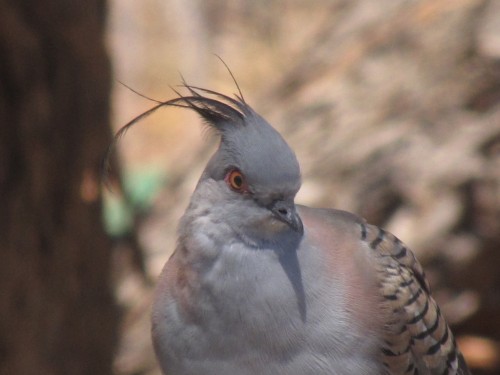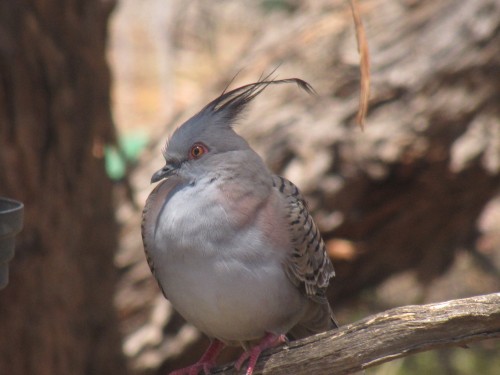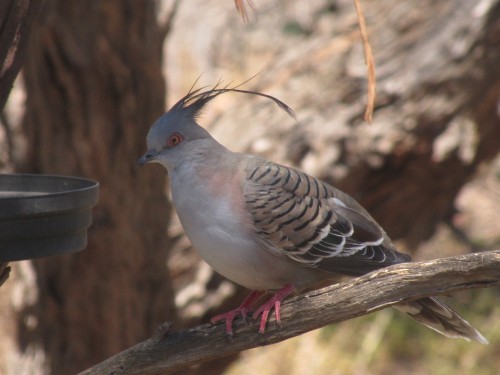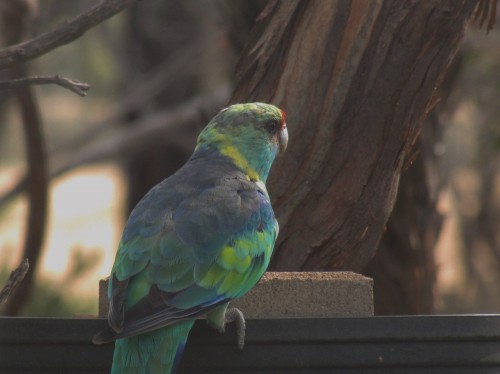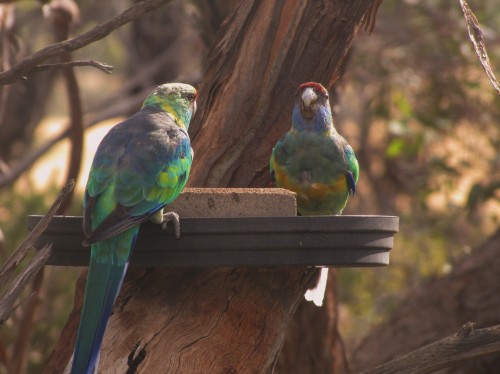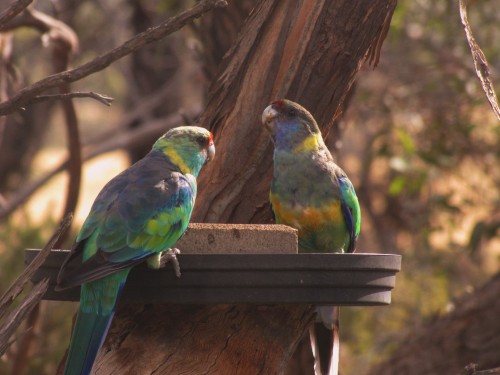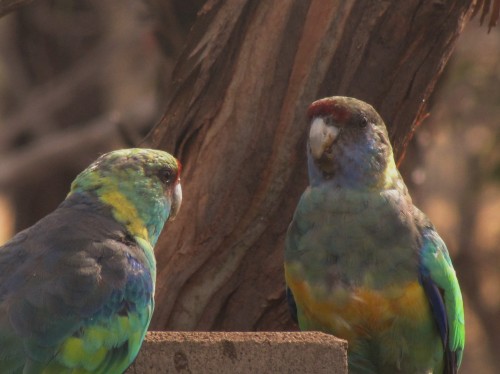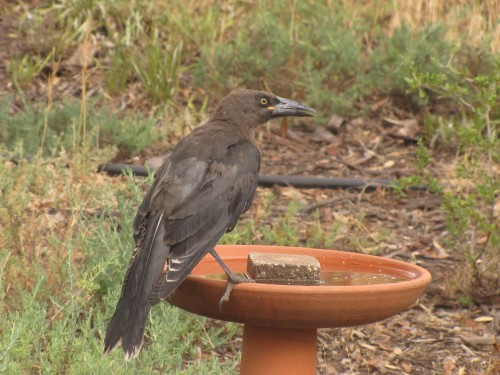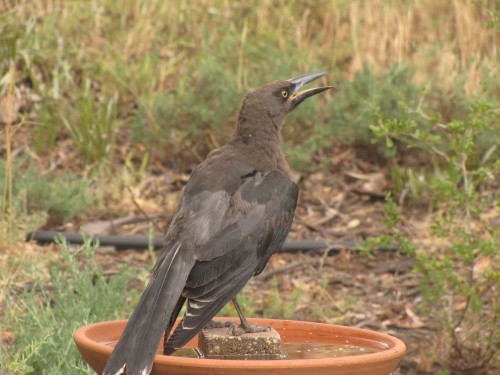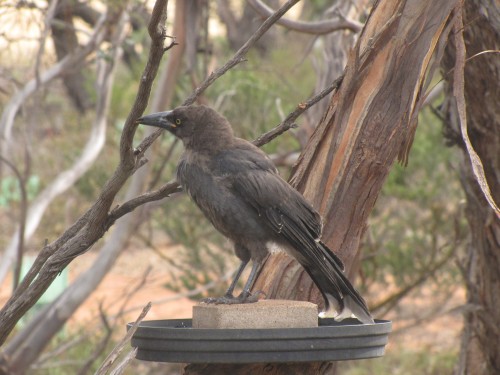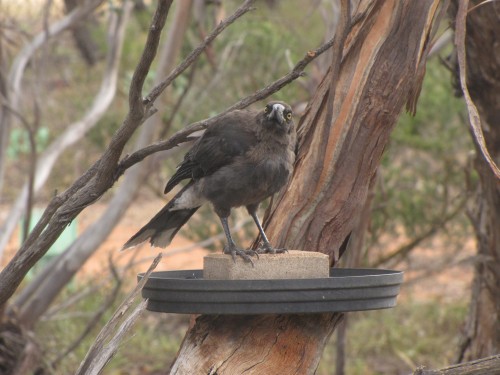Silvereyes come for a bath
In my last article here I posted some photos of Yellow-rumped Thornbills bathing in the small pools of water which gather after rain on our swimming pool solar blanket. On the same day, a small number of Silvereyes also came for a drink and to bathe. I have shown these in today’s post.
Our swimming pool is in our backyard, a short distance from our back veranda. On nice sunny days when it is not too hot in the middle of summer, or not too cold in the middle of winter, we enjoy sitting on the veranda to have our lunch. Sometimes we take a mid-morning break there for a cup of tea or coffee. We have also taken an afternoon break when gardening.
On all of these occasions, we enjoy the constant parade of birds in our garden, perched on the fence or in the trees nearby, and on the pool cover like the Silvereyes shown today. I often have my binoculars and camera at the ready while we sit there. On this occasion, I managed to get many photos of the Silvereyes and the Yellow-rumped Thornbills. A Grey Fantail was also fluttering around, but you will have to return in a few days’ time to see those photos in my next post.
The water that gathers on our swimming pool cover in the winter and spring months are visited by many birds over the course of each day. In addition to the species I have already mentioned, another frequent visitor is the Magpie Lark. Both the male and the female come on a daily basis, often perching on the pool safety fence and calling loudly, their antiphonal singing a delight to hear. (Antiphonal: when the two birds sing a duet in parts.)
Our resident Australian White-backed Magpies also come to drink, and the bossy Red Wattlebirds will chase the smaller birds off. White-plumed Honeyeaters flit in and out nervously, while the Peaceful Doves take their time, gradually getting closer and closer until they gather the courage to stoop and drink. The Crested Pigeons also come for a drink, though they are usually more interested in mating displays than drinking.
The Welcome Swallows occasionally swoop low over the pool but more often they are seen much higher in the air. The many House Sparrows and Common Starlings come frequently to drink and bathe, but the resident Mallee Ringnecks rarely do so; they prefer to feed in the nearby trees. The Willie Wagtails, however, are frequent visitors to this part of the garden.
As you can see, it is never boring in our garden if you are a birder like myself.
Good birding,
Trevor
PS: Over the years, I have written articles about all of the birds mentioned in this article. To see photos of them, and to read more about each of them, use the search facility in the top right-hand corner of any page.
Give the birds a drink
It has been a year of great weather contrasts this year in South Australia, and in other parts of the country too. At various times it has been freezing cold, fiery hot, bucketing with rain, wild storms and everything in between. We have also had the occasional beautiful day as well. Our state has had terrible bushfires, devastating floods, power blackouts from storms, crop damage due to large hail and silently creeping frosts.
Now we are about to feel the full force of summer weather. Christmas Day tomorrow promises temperatures in the low 40s (40C = 104F). In fact. our capital city Adelaide is forecast to be the hottest capital city in the world on Christmas Day. Still, at this time of the year, we expect some days in the 40s and many days in the 30s.
Heat and birds
The heat can adversely affect our birdlife here in Australia. One of the best things people can do in these hot conditions is to put out clean water for the birds. I have several birdbaths dedicated to the birds in our garden. A constant stream of birds come to have a bath or a drink on hot days. Even on mild days, the bowls are very popular.
Place the bird bath in a shady location near to a tree or bush. This can help protect the smaller species from birds of prey; it gives them a place to escape. It can be on the ground but is better if it is elevated a little. This will give the birds a clear view of any approaching cats.
Try to remember to clean the bird bath regularly, and during our hot weather this summer, top it up every day.
Photography
I have found over many years that having a bird bath near a window makes it easy to get good photographs of the birds while they are drinking or bathing. My wife and I find it very relaxing sitting in a cool room on a hot day, watching the parade of birds coming to drink.
Further reading:
- Time for a bath – a list of birds and animals we have observed at our bird baths
- The importance of bird baths – another article about bird baths
Good birding,
Trevor
Topsy the Crested Pigeon
Over recent weeks my wife and I have been intrigued by one of our resident Crested Pigeons – shown in the photos on today’s post. We suspect that she is a female because another pigeon was displaying to her recently. We have given her the name “Topsy” because she has some extra-long feathers making up her crest. I am not sure what has caused this slight aberration, but it certainly makes her stand out from the other pigeons in our garden.
Like all of the Crested Pigeons and Spotted Turtledoves resident in our garden and on our five-acre block, “Topsy” comes frequently to our bird baths for a drink. Today, while I was having a cuppa after lunch she came once again. She spent a few minutes on a nearby branch preening before flying down for a drink. She then flew down to the ground and sat down in the sunshine. She immediately lifted up one wing and held it with the underparts exposed to the warm sun. “Topsy” then stood up, changed position and raised the other wing in the same manner.
While I haven’t seen this sunbathing behaviour in many species I have observed it in Spotted Turtledoves, Red wattlebirds, Noisy Miners and Australian Magpies. It is surprising that there is very little mention of this behaviour in the literature, but this article on the Australian Birdlife site gives the topic a good coverage. The article suggests that this sunbathing behaviour could be aimed at ridding the birds of unwanted lice.
Further reading:
- Sunny side up – the article I referred to above
- An Australian Magpie sunning itself – this is an old post written some years ago. It shows a series of 10 photos of a magpie sunning itself.
Mallee Ringnecks on a hot day
During the hot weather we have experienced so far this summer here in South Australia I have had many opportunities to take photos of the constant parade of birds visiting our bird baths. We have positioned the water containers where we can see the birds from our sun room, a room we use often so we can enjoy the birds in our garden.
The Mallee Ringnecks shown in today’s set of photos are resident birds in our garden. This means that we see them every day. On several occasions in recent times they have raised a brood of young ones. We love seeing their colourful feathers as they fly around the garden and especially when they come to drink and bathe. At those times we can really get to appreciate their colours up close.
On the other hand, we have a love-hate relationship with these birds. We hate it when they get into our fruit trees, nibbling at the almost ripened fruit before we have a chance to rescue the fruits of our labours. This year, because of a bad back, I have not been able to cover the trees with netting. Consequently the birds – and possibly the resident possums as well – have taken some of our fruit. We were especially looking forward to a large crop of nectarines. (Those we were able to rescue were delicious.) I must get to the pears before the birds get to them as well.
Further reading:
- Ringnecks and kites
- Mallee Ringnecks nesting
- A small birding accident
- The beautiful Eastern Rosella parrot
Hot weather birding
Over recent posts I have written about the very hot conditions we have had here in South Australia this summer. I won’t bore you by stating the obvious yet again. When the weather gets much over 30C (86F) I tend not to go out birding, though I have on occasions been out in much hotter weather.
When the temperature soars here in Murray Bridge (80 km SE of Adelaide) I tend to stay indoors as much as possible. It is one of the joys of being ‘retired’. On these occasions we have the delight of a constant stream of birds coming to our bird baths. These containers are strategically placed in our garden where we can observe – and photograph – the birds at our leisure. On very hot days like we have had over recent months the stream has sometimes been a flood.
When the Grey Currawongs come to drink, most of the smaller birds keep their distance. I am not surprised by this; the Currawong’s bill and head is about the size of birds like the thornbills or the wrens. I guess that the smaller species know instinctively that the Currawong is capable of raiding their nests for eggs and baby birds, and so they remain at a respectful distance while the bigger birds are drinking.
During one of our recent hot spells this juvenile Grey Currawong came for a drink. I can tell that it is a young one not long out of the nest because of the downy feathers, as well as the yellow gap on the bill. Only a few days before these photos were taken I saw the juveniles being fed by the adults.
Once the Currawong had finished drinking, the smaller birds quickly returned.
